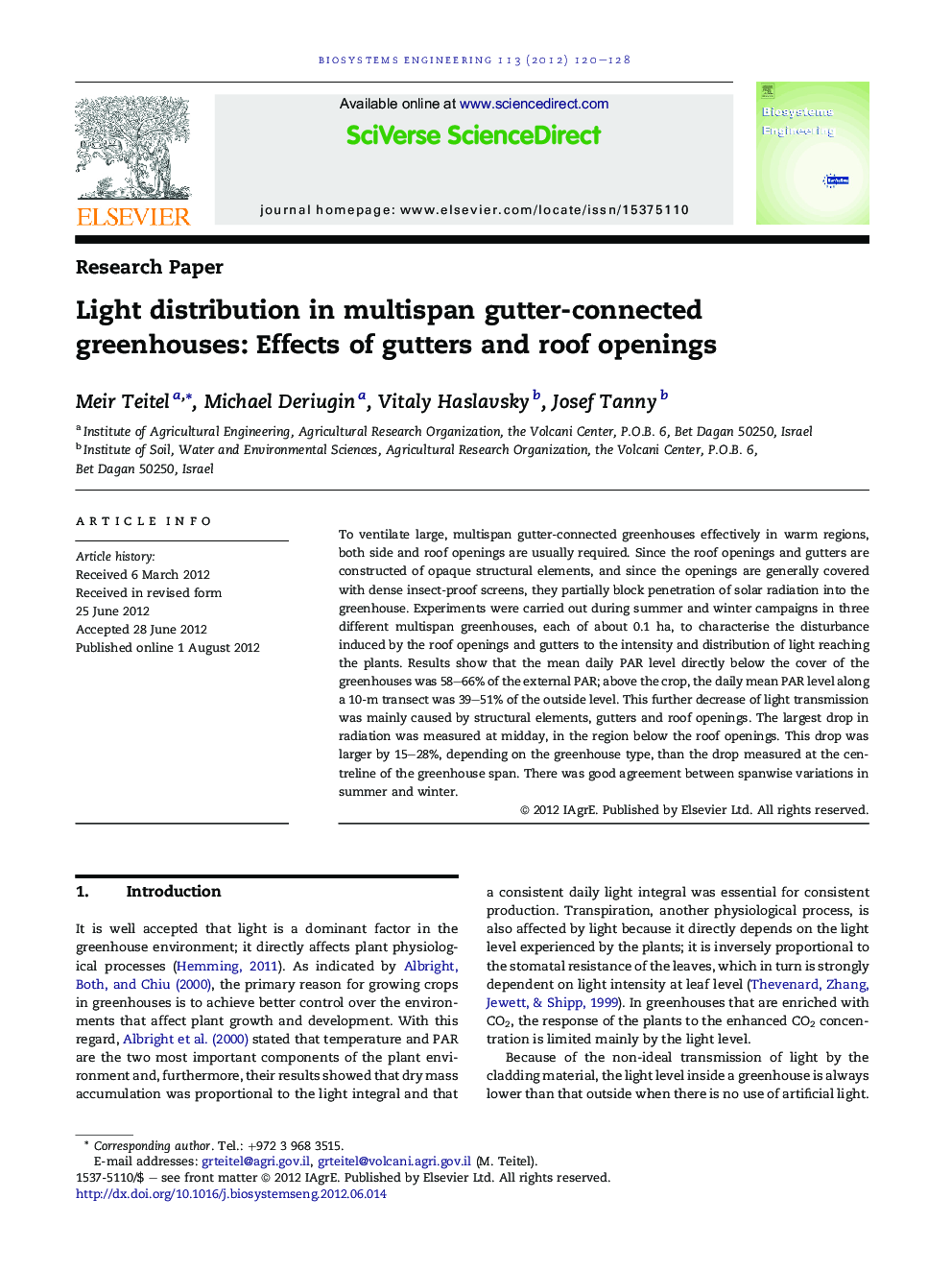| Article ID | Journal | Published Year | Pages | File Type |
|---|---|---|---|---|
| 1711453 | Biosystems Engineering | 2012 | 9 Pages |
To ventilate large, multispan gutter-connected greenhouses effectively in warm regions, both side and roof openings are usually required. Since the roof openings and gutters are constructed of opaque structural elements, and since the openings are generally covered with dense insect-proof screens, they partially block penetration of solar radiation into the greenhouse. Experiments were carried out during summer and winter campaigns in three different multispan greenhouses, each of about 0.1 ha, to characterise the disturbance induced by the roof openings and gutters to the intensity and distribution of light reaching the plants. Results show that the mean daily PAR level directly below the cover of the greenhouses was 58–66% of the external PAR; above the crop, the daily mean PAR level along a 10-m transect was 39–51% of the outside level. This further decrease of light transmission was mainly caused by structural elements, gutters and roof openings. The largest drop in radiation was measured at midday, in the region below the roof openings. This drop was larger by 15–28%, depending on the greenhouse type, than the drop measured at the centreline of the greenhouse span. There was good agreement between spanwise variations in summer and winter.
► PAR distribution in a multispan, gutter-connected, greenhouse is not homogeneous. ► Near span centreline, there is negligible effect of gutters and roof vents on PAR. ► The largest mean daily reduction of PAR is below the gutters and roof openings. ► PAR change from summer to winter mainly due to outside intensity not incident angle.
